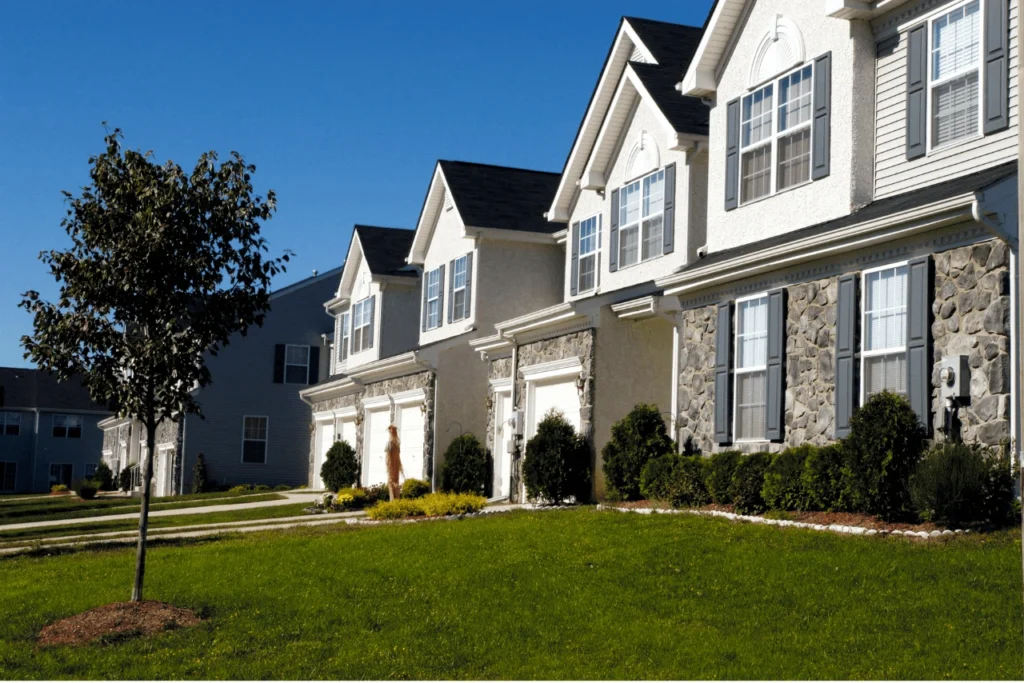
Buying a condo in Arizona offers a perfect mix of homeownership and low-maintenance living—but it also comes with unique insurance needs. Unlike traditional homes, condominiums share common walls, spaces, and structural components with other units, which affects how insurance coverage works.
If you’re moving into a condo or reassessing your current policy, here’s what you need to know about how condo insurance differs from standard homeowners insurance—and why choosing the right policy matters.
What Kind of Insurance Do Condo Owners Need?
Coverage is typically split between two policies:
The Association’s Master Policy: Held by the condo association, it covers common areas like the building exterior, hallways, elevators, and amenities such as pools or gyms. It may also cover some structural components of your unit.
Your Personal Condo Policy (HO-6): This is your policy as a unit owner. It covers everything inside your condo: walls, flooring, cabinets, appliances, furniture, and personal belongings. It also includes personal liability if someone is injured inside your home.
Because condo insurance must fill the gaps left by the association’s policy, it’s important to understand what your master policy covers.
How Does Condo Insurance Compare to Homeowners Insurance?
| Coverage Area | Condo Insurance (HO-6) | |
|---|---|---|
| Structure (Exterior) | Covered | Covered by HOA |
| Interior Fixtures | Covered | Covered |
| Personal Belongings | Covered | Covered |
| Land/Grounds | Covered | Not Covered |
| Shared/Common Areas | Not Applicable | Covered by HOA |
| Liability Inside Property | Covered | Covered |
| Liability Outside Property | Covered | Not Covered |
| Temporary Living Expenses | Included | Included |
If you own a house, you insure everything from the ground up. Condo owners usually insure from the drywall in—though this depends on the HOA’s master policy.
Buying a condo in Arizona offers a perfect mix of homeownership and low-maintenance living—but it also comes with unique insurance needs. Unlike traditional homes, condominiums share common walls, spaces, and structural components with other units, which affects how insurance coverage works.
If you’re moving into a condo or reassessing your current policy, here’s what you need to know about how condo insurance differs from standard homeowners insurance—and why choosing the right policy matters.
What Kind of Insurance Do Condo Owners Need?
Coverage is typically split between two policies:
The Association’s Master Policy: Held by the condo association, it covers common areas like the building exterior, hallways, elevators, and amenities such as pools or gyms. It may also cover some structural components of your unit.
Your Personal Condo Policy (HO-6): This is your policy as a unit owner. It covers everything inside your condo: walls, flooring, cabinets, appliances, furniture, and personal belongings. It also includes personal liability if someone is injured inside your home.
Because condo insurance must fill the gaps left by the association’s policy, it’s important to understand what your master policy covers.
What Does Condo Insurance (HO-6) Typically Cover?
Condo insurance, also known as an HO-6 policy, is designed to protect what’s inside your unit and fill the gaps left by your condo association’s master policy.
Structure (Exterior): This part of the condo is usually covered by your HOA’s master policy, so your personal condo insurance doesn’t need to include it.
Interior Fixtures: Anything inside your unit—such as walls, flooring, cabinets, and other built-in features—is covered under your condo policy.
Personal Belongings: Your condo insurance protects your personal items, including furniture, electronics, clothing, and more.
Shared or Common Areas: These are maintained and insured by the HOA. Your policy won’t cover damage or incidents in hallways, lobbies, or exterior spaces.
Liability Inside Your Property: If someone is injured in your condo, your HO-6 policy will help cover legal fees, medical costs, or settlements.
Liability Outside Your Property: Condo insurance typically does not cover liability claims that occur outside your unit.
Temporary Living Expenses: If your condo becomes uninhabitable due to a covered event (like fire or water damage), your policy can pay for hotel stays and other temporary housing costs.
Upgrades and Improvements: Any upgrades you’ve made—such as granite countertops, custom flooring, or remodeled bathrooms—are covered, as long as they’re listed in your policy.
What Does the Condo Association’s Master Policy Cover?
Review your HOA’s master policy to avoid coverage gaps or overlaps. Two main types are:
Bare Walls Coverage: Covers only shared building elements and exterior structure. Everything inside your unit (cabinets, flooring) is your responsibility.
All-In Coverage: Covers shared areas plus interior fixtures and improvements installed by the builder—but excludes your personal property and liability.
Many Arizona condo owners don’t realize they’re underinsured until it’s too late. Review your HOA’s policy carefully to protect yourself.
Why Personalized Condo Insurance Matters
Even with a strong master policy, your personal condo insurance needs to cover:
Furniture, electronics, and clothing
Upgrades like granite counters or custom flooring
Lawsuits or injuries inside your unit
Temporary living costs if your unit is damaged and uninhabitable
A custom HO-6 condo insurance policy fills these gaps, ensuring your home and belongings are fully protected.
Ready to Protect Your Condo with Confidence?
Whether you’re buying a condo in Phoenix, Scottsdale, or anywhere in Arizona, Top Rate Insurance is here to help. We’ll review your HOA’s master policy, explain your risks, and craft a personalized insurance plan tailored to you.
Contact us today for a fast, no-obligation condo insurance quote.
Learn More About Home Insurance in Arizona
Explore our other posts to help protect your property:
Insuring Your Arizona Home Against Fire and Natural Disasters
5 Tips to Lower Your Homeowners Insurance Premium in Arizona
For additional insights on condo and homeowners insurance, visit InsuranceNeighbor.com.


